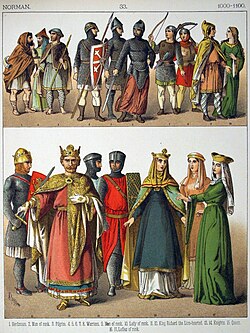Immigration
https://venngage.com/blog/why-immigration-is-good/
Norway
Facts
Immigrants in Norway per 2018 - 916 625, 17,3%
https://no.wikipedia.org/wiki/Innvandrere_i_Norge
3 types of immigrants:
1) Skilled workers that our country demands and has recruited from other countries
- Middle ages - Fish and timber: Hanseatic (German), English, Dutch and Scottish
- Industrialization - 17th century - Mining and textile industry, Germans and English
- Farming - experts from Switzerland
- Oli industry - experts from the USA
- Health - surgeons (kirurger) from Asia
2) Work immigrants - people who have come to seek work of their own choice
- 1800-1920 - large immigration from neighbouring countries. 100 000 Swedes. Also a lot of Finnish people immigrating to the north of Norway
- 1960s-1975 - A lot of immigrants from south-east Europe, Jugoslav, Pakistan and Turkey
3) Refugees and asylum seekers
- Political and religious refugees from the 18th century
- Passport obligation 1917 - to secure the welfare of Norwegians - more strict
- Boat refugees from Vietnam - 1970s
- War refugees from Balkan - 1990s
- 2015 - Refugee crisis - Syrians and Afghans
The USA
1960s-now
Late 1800s-1920s
Mid-1800s
After the discovery of gold in California in 1849, people from
all over the world came to take part in the Gold Rush. Many Chinese
also moved to the west coast at this time.
Irish immigrants
From 1641 to 1652, over 300,000 Irish people were sold as virtual slaves as a form of punishment to the first 13 colonies lasting from 7 to 20 years. The next major wave of Irish immigration was due to the devastation of the Irish Potato Famine (1845-1849). During the period of the Irish Potato Famine the population of Ireland dropped from 8 million to 6 million due to death from starvation or immigration.

Early immigration 1600-1800
The discovery of America led to a great power struggle for control of the new lands primarily between the three most powerful countries in Western Europe at the time: Spain, England, France. These European countries financed the voyages of the early explorers for many reasons:
To increase their lands and build great European Empires and to increase the wealth of the 'Mother Country' by exploiting the natural resources of the new lands - the search began for gold, silver and spices. To increase opportunities for trade and to spread the Christian religion.
The first explorers were followed by settlers - the immigration to America by the Europeans began in earnest. Most early immigrants were from England, but they also came from Scotland, Wales, Ireland, Germany, Holland and France by the 1600s
Native Americans
Native Americans, also known as American Indians, Indigenous Americans and other terms, are the indigenous peoples of the United States, except Hawaii. There are over 500 federally recognized tribes within the US, about half of which are associated with Indian reservations.
Most famous:

Pros=fordeler
need immigrants to exist
https://www.economist.com/graphic-detail/2017/07/12/why-europe-needs-more-migrants
new languages
new cultures
Innovation
It encourages economic recovery - immigrants are more likely to move to a new location
It raises the GDP (BNP)
contribute to their local community
Cons
It can result in human rights violations (trafficking)
It can place stress on local social services
It can split up families
It may create integration difficulties
It is easier to exploit immigrants
Immigration can cause over-population issues
It reduces the chance of developing poor countries
Wage disparities (lønnsforskjeller) - it may lead to lower wages
New diseases
Jutes (Denmark) and Vikings (Norway)
Australia
Underemne
Asian immigration
Post-War immigration
After WWII, Australia launched a massive immigration program. Australia must "populate or perish".
- Hundreds of thousands of displaced Europeans migrated to Australia
- Over 1mill Brits immigrated between 1947-1981 - funded by the British and Australian governments
,
Prisoners from England
Australian Aborigines
UK
People from their colonies
Anglo Saxons (German)
 The Anglo-Saxons were a people who inhabited Great Britain from the 5th century. the Anglo-Saxon period denotes the period in Britain between about 450 and 1066, after their initial settlement and up until the Norman conquest.
The Anglo-Saxons were a people who inhabited Great Britain from the 5th century. the Anglo-Saxon period denotes the period in Britain between about 450 and 1066, after their initial settlement and up until the Norman conquest.
Normans (French) invaded England 1066
The Normans are an ethnic group that arose in Normandy, a northern region of France
The Norman dynasty had a major political, cultural and military impact on medieval Europe and the Near East

Romans (Todays Italy)
The Silures (Wales)
The Celts (Central Europe)
The Picts (Scotland)













